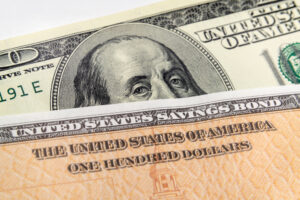Factors Contributing to the Potential Superior Performance of Bonds Compared to Stocks in 2023
Investors always strive to find the best investment options that can provide them with the highest returns possible. When it comes to investing, the two most popular choices are stocks and bonds. While stocks have always been considered the go-to option for many investors, bonds are starting to become an increasingly attractive option. In fact, in 2023, bonds could potentially outperform stocks.
To understand why bonds could do better than stocks, it’s important to first understand the fundamental differences between the two. Stocks represent ownership in a company, while bonds represent a loan made to a company or government entity. Stocks offer the potential for capital appreciation and dividends, while bonds offer regular interest payments and a return of principal at maturity.
Rising Interest Rates
Bonds were beaten up badly in 2022 while the federal reserve was raising interest rates to fight inflation. The Fed was raising interest rates at the fastest pace since the late ’04-06 hikes. As inflation cools off and the Fed Reserve slows down on interest rate hikes, how might this present an opportunity to invest in bonds?
Bonds are a type of investment that offers a fixed return in the form of interest payments. In 2022, bonds were beaten down due to the Federal Reserve’s decision to raise interest rates in order to combat inflation. However, as inflation cools off and the Federal Reserve slows down on interest rate hikes, this presents an opportunity for investors to consider investing in bonds once again.
When the Federal Reserve raises interest rates, the yield on bonds tends to increase, making them more attractive to investors. However, when interest rates rise too quickly, as they did in 2022, it can have a negative impact on bond prices. This is because investors start to demand higher yields on newly issued bonds to compensate for the higher interest rates. This makes older bonds with lower yields less attractive and causes their prices to fall.
Why Is The Fed Reserve Slowing Down the Stock Market on Purpose?
Stocks could slow down or remain slower until the Federal Reserve gets inflation under control. When the Federal Reserve tries to raise interest rates to affect the demand side of the supply/demand curve, they often run the risk of overshooting their interest rate target in an attempt to get inflation under control. The reason why they are working to affect the demand side of the curve is the supply chain issues that have been out of control since the start of COVID-19 and China’s shutdown.
The impact of interest rates on the economy can be complex and difficult to predict. When interest rates are raised too quickly or too aggressively, it can lead to a slowdown in economic activity, which may result in decreased demand for goods and services. However, if interest rates are not raised quickly enough or are not raised enough, it can lead to increased inflation as demand for goods and services outstrips supply. As a result, the Federal Reserve may need to adjust interest rates multiple times to find the right balance between controlling inflation and supporting economic growth. In simple terms, the Federal Reserve needs the stock market to slow down in order to get inflation under control or until they can use the interest rate adjustments to affect the supply side of the curve instead of the demand.
Bond Market Rally
Now that inflation starting to cool off and the Federal Reserve is slowing down on interest rate hikes, the yields on bonds are likely to stabilize or even decrease, making them a potentially attractive investment option once again. As yields decrease, the prices of older bonds with higher yields will start to increase, potentially leading to capital gains for investors who hold them.
In other words, when interest rates stop rising, the bond markets can typically recover their losses as the prices of existing bonds start to increase. This is because bond prices and interest rates have an inverse relationship; as interest rates rise, bond prices fall, and vice versa. When interest rates stabilize or decrease, the demand for existing bonds with higher yields increases, causing their prices to rise. As a result, investors who hold these bonds can potentially earn capital gains as their bond holdings increase in value.
Additionally, as new bonds are issued with lower yields, their prices may increase as investors seek higher returns, further contributing to the recovery of the bond market. Overall, the recovery of the bond market after interest rates stop rising can present an opportunity for investors to potentially earn capital gains and benefit from stable income.
Overall, while bonds were beaten down in 2022 due to the Federal Reserve’s decision to raise interest rates, the current environment of cooling inflation and slowing interest rate hikes presents an opportunity for investors to consider investing in bonds once again. Bonds can provide investors with stable income, potential capital gains, and diversification benefits, making them a valuable addition to any well-diversified investment portfolio. The Federal Reserve will continue to fight inflation until this is under control, this provides a slow economic outlook especially for equities (stocks) moving forward short term. Once the Fed slows down its interest rate hikes, investors that are fearful or have been beaten up over the stock market might start to flock toward bonds, which might be in line for a nice recovery.


